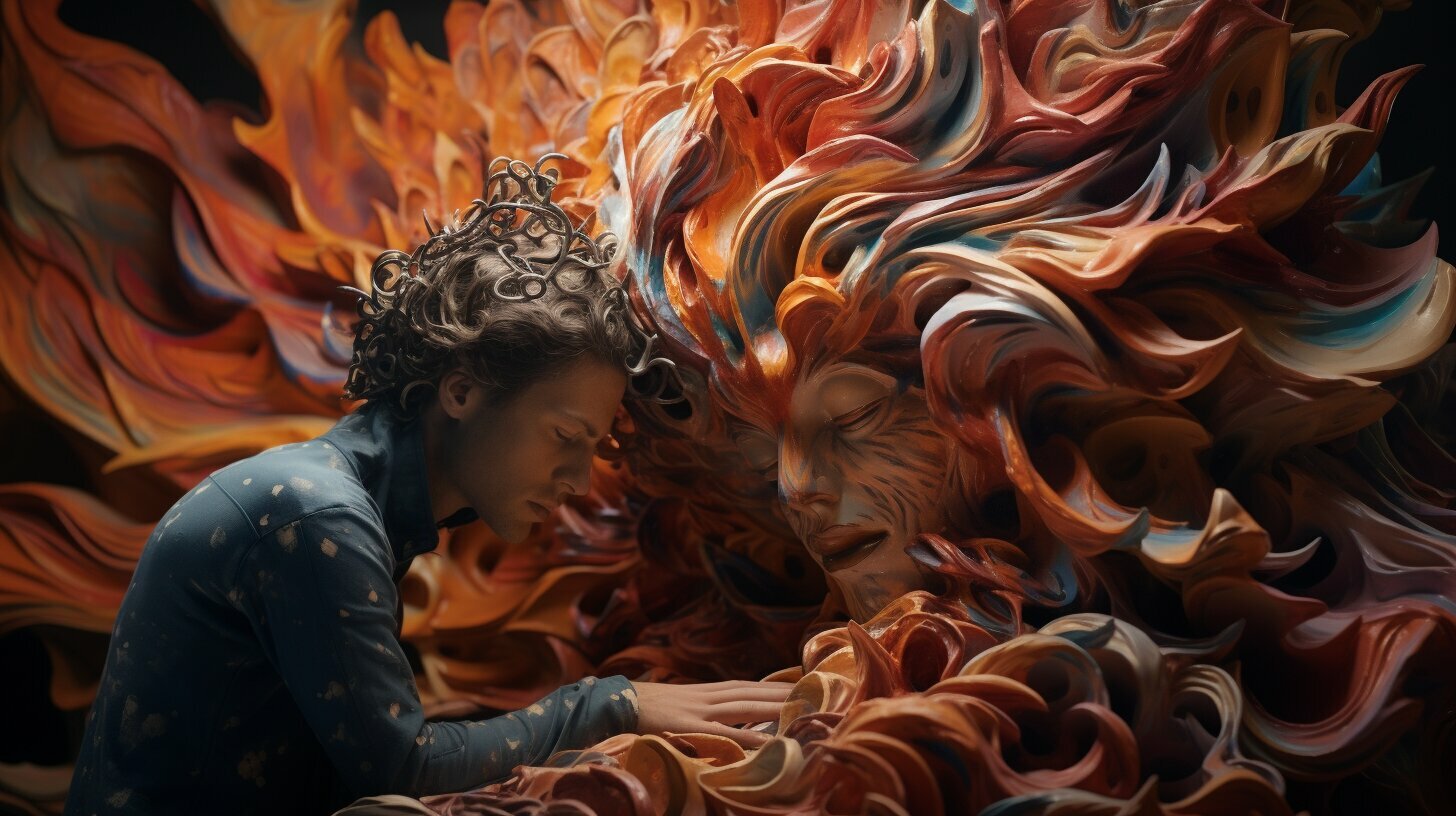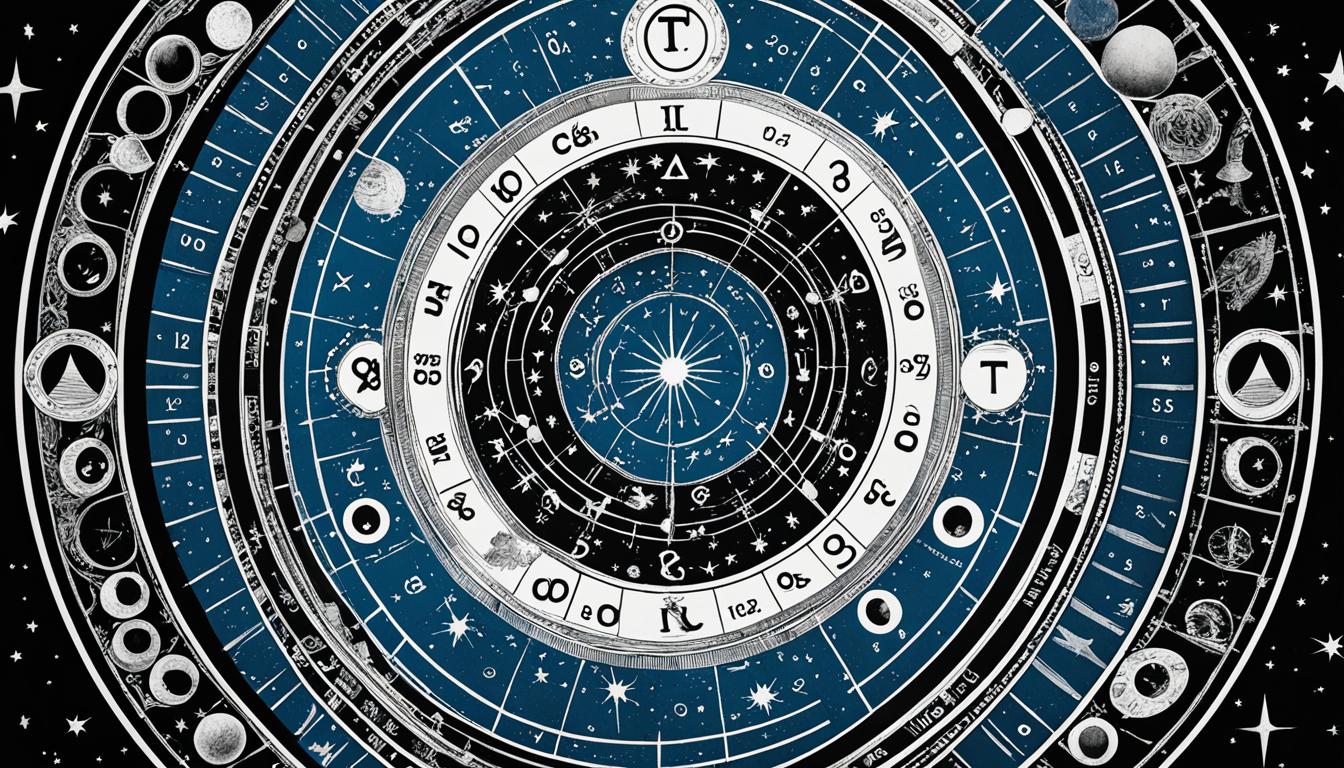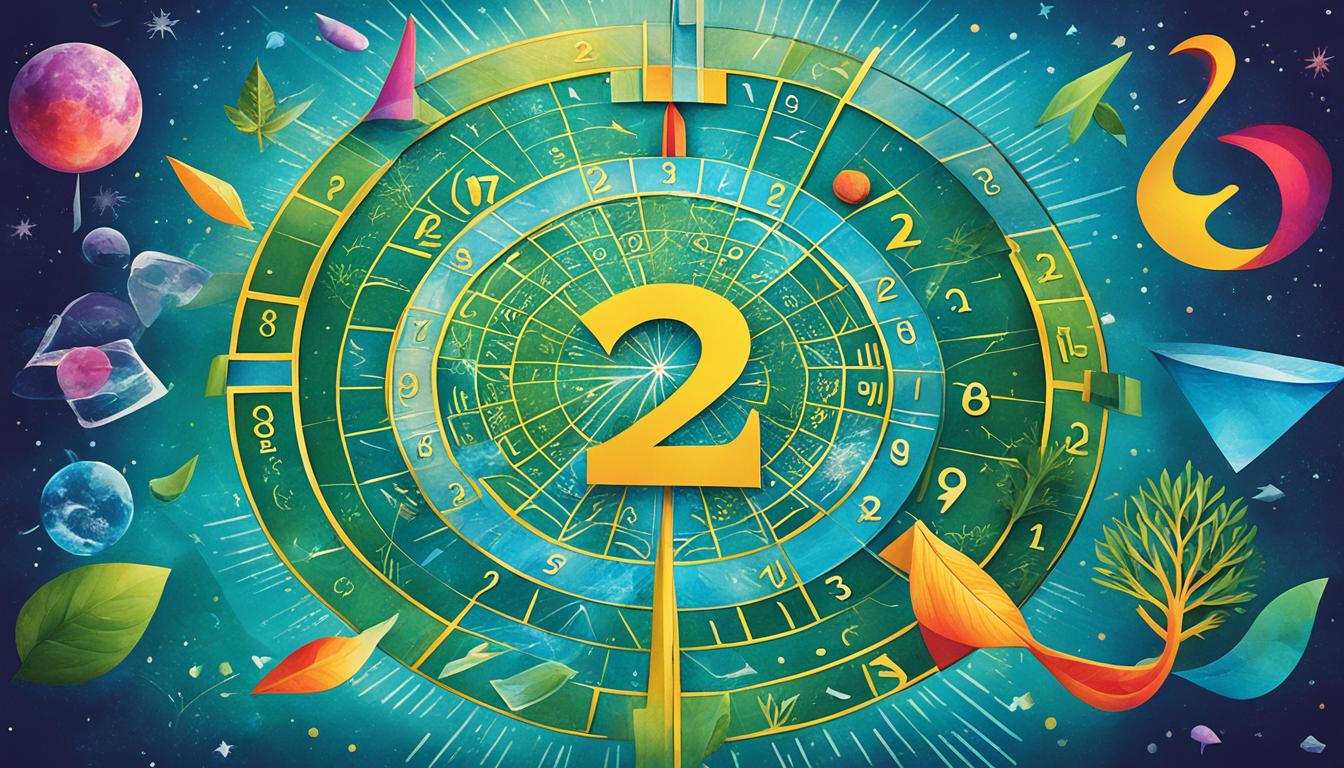Welcome to my article on dream psychoanalysis! As a dream psychoanalyst with years of experience, I have come to appreciate the depth and complexity of the human mind, as revealed through our dreams. Dreams are a treasure trove of insights into our subconscious, providing us with clues to our deepest desires, fears, and emotions. In this section, I will introduce the topic of dream psychoanalysis and explain why it is such a powerful tool for understanding ourselves.
Dream psychoanalysis is the practice of analyzing and interpreting dreams to gain insight into the workings of the subconscious mind. It is based on the principle that dreams are a reflection of our innermost thoughts and emotions and that by understanding them, we can gain self-awareness and personal growth. Dream psychoanalysis is a complex and nuanced field, requiring a deep understanding of psychology, symbolism, and the human psyche.
Key Takeaways:
- Dream psychoanalysis is the practice of analyzing and interpreting dreams to understand the subconscious mind.
- Dreams provide valuable insights into our deepest desires, fears, and emotions.
- Dream psychoanalysis requires a deep understanding of psychology, symbolism, and the human psyche.
Understanding Dreams: The Gateway to the Subconscious
In my experience as a dream psychoanalyst, I have found that dreams are a unique way for our subconscious minds to communicate with us. Dreams provide valuable insights into our emotions, thoughts, and desires, and can help us uncover hidden aspects of ourselves that may be affecting our waking lives.
While the content of our dreams can be strange and confusing, dream analysis can help us make sense of them. Through the interpretation of dream symbols and themes, we can gain a better understanding of our subconscious minds and the messages they are trying to convey.
It is important to note that dream analysis should not be used as a substitute for therapy or medical treatment. However, it can be a useful tool for self-exploration and personal growth when approached with an open mind.
The Nature of Dreams
Dreams occur during the rapid eye movement (REM) stage of sleep and can last anywhere from a few seconds to over an hour. They are typically composed of a series of images, scenes, and narratives that may or may not be connected to one another.
According to some theories, dreams are the brain’s way of consolidating memories and processing emotions. Others suggest that they may be a means of problem-solving or simulation of real-life situations.
Regardless of their purpose, dreams offer a unique window into our subconscious minds and can provide valuable insights into our lives.
The Benefits of Dream Analysis
Dream analysis can help us gain a deeper understanding of ourselves and the challenges we are facing. By examining the symbols and themes present in our dreams, we can identify patterns and unconscious beliefs that may be holding us back.
For example, if you frequently dream of falling or being chased, it may be a sign of anxiety or a fear of failure. By recognizing this pattern and exploring its possible meanings, you can work towards overcoming these fears and moving forward in your life.
Dream analysis can also help us explore unresolved issues from our past and gain insights into our current relationships and behaviors. Through the exploration of our dreams, we can gain a deeper understanding of our true selves and work towards personal growth.
Next, let’s explore the significance of dream symbols and how they can be interpreted to uncover deeper meanings.
Decoding Dream Symbols: Unraveling the Language of the Unconscious.
In dream analysis, interpreting symbols is crucial to understanding the deeper meanings behind our dreams. Symbols are a way for our unconscious mind to communicate with us, using imagery that often has a personal or cultural significance.
Common dream symbols, such as water, animals, and colors, can have different interpretations depending on the context of the dream and the individual’s personal associations with them. For example, dreaming of a snake might represent fear or danger for one person, while for another it could symbolize transformation or rebirth.
Therefore, it is important to approach dream symbols with an open mind and consider all possible meanings. It is also important to pay attention to the emotions and sensations that arise during a dream, as they can provide valuable insights into the symbolism.
| Dream Symbol | Possible Interpretations |
|---|---|
| Water | Emotions, unconscious mind, purification, cleansing |
| Birds | Freedom, spirituality, communication, higher perspective |
| Fire | Passion, transformation, destruction, creativity |
When analyzing dream symbols, it is important to consider the context of the dream and the individual’s current life experiences and emotions. For example, if an individual is going through a difficult time in their life, they may have dreams involving storms or turbulent weather as a symbol of their emotional turmoil.
It can also be helpful to keep a dream journal and document recurring symbols and themes, as they may provide insights into patterns or unresolved issues in one’s life. Seeking guidance from a dream psychoanalyst or therapist can also provide additional perspective and support in interpreting dream symbols.
The Role of Dream Therapy: Healing through Dream Work
As a dream psychoanalyst, I firmly believe in the therapeutic power of dream analysis. By exploring the deeper meanings behind our dreams, we can gain valuable insights into our thoughts, emotions, and behaviors. Dream therapy is a form of psychotherapy that uses dream analysis as a tool for self-exploration and personal growth.
During dream therapy sessions, I work with clients to interpret their dreams and explore the unconscious aspects of their psyche. By uncovering hidden emotions, desires, and fears, individuals can gain a better understanding of themselves and their relationships with others.
One of the key benefits of dream therapy is that it allows individuals to process past traumas and unresolved issues. Dreams often contain symbols and imagery related to our past experiences, and analyzing these dreams can help us come to terms with and heal from these events.
Dream therapy also provides opportunities for personal growth and self-awareness. By examining recurring themes and patterns in our dreams, we can identify areas of our lives that may need attention or change. Dream therapy can help individuals develop a deeper sense of self-understanding and lead to more fulfilling and authentic lives.
Subconscious analysis is an important aspect of dream therapy. By exploring the unconscious aspects of our psyche, we can gain insight into hidden aspects of ourselves, including our deepest fears and desires. Through the process of dream analysis, individuals can confront and work through these subconscious issues, leading to greater emotional well-being and personal growth.
Lucid Dreaming: Taking Control of the Unconscious Mind.
In my years of experience as a dream psychoanalyst, I’ve come across many individuals who are fascinated by the concept of lucid dreaming. What is it exactly, and how can it help us understand our subconscious minds?
Lucid dreaming is a state of consciousness where the dreamer is aware that they are dreaming. It allows us to take control of our dreams and actively participate in them, exploring different scenarios and even altering the dream’s outcome. This can be a powerful tool for self-exploration and personal growth.
But how can we achieve lucid dreaming? There are various techniques and methods, including keeping a dream journal, reality-checking throughout the day, and practicing visualization exercises. It’s important to note that not everyone can achieve lucid dreaming, and it may take time and practice to master the skill.
The benefits of lucid dreaming can be significant, as it allows us to tap into our subconscious minds and gain deeper insights into our thoughts, emotions, and desires. By taking control of our dreams, we can confront fears, process emotions, and even practice new behaviors and skills.
Exploring the Connection Between Lucid Dreaming and Dream Psychoanalysis
Lucid dreaming can also be connected to dream psychoanalysis. By analyzing and interpreting the content of lucid dreams, we can gain a better understanding of our subconscious minds and the meaning behind our dreams. We can also use lucid dreaming as a tool for therapy, practicing new behaviors and coping mechanisms in a safe and controlled environment.
However, it’s important to note that lucid dreaming should not replace traditional therapy or professional guidance. It can be a powerful supplement to these methods, but should not be relied upon as the sole method of self-exploration and healing.
Overall, the practice of lucid dreaming can be a valuable tool for understanding our subconscious minds and exploring the depths of our dreams. By practicing lucid dreaming and analyzing its content, we can gain deeper insights into ourselves and promote personal growth and healing.
Unveiling Dream Meanings: Tools and Techniques for Interpretation
Dream interpretation can be a powerful tool for unlocking the mysteries of the subconscious mind. As a dream psychoanalyst, I have found that developing the skills to interpret dreams can lead to greater self-awareness, personal growth, and healing.
Keeping a Dream Journal
One of the most effective ways to begin interpreting dreams is to keep a dream journal. This involves recording your dreams as soon as you wake up, while the details are still fresh in your mind. By keeping a record of your dreams over time, you may begin to notice patterns or recurring themes that can help you gain insight into your inner world.
When recording your dreams, it is important to include as many details as possible. This includes people, places, objects, and emotions that appear in the dream. Even seemingly insignificant details can hold great meaning when interpreted within the context of the dream as a whole.
Analyzing Recurring Themes
Another technique for interpreting dreams is to analyze recurring themes or symbols. These may include common themes such as falling, flying, or being chased, or symbols that are specific to your personal experiences and associations. By paying attention to these recurring themes, you may begin to uncover patterns or messages that your subconscious is trying to communicate.
It is important to note that dream symbols may have different meanings for different individuals. Therefore, it is important to reflect on your personal associations with a particular symbol or theme when interpreting its meaning in your dreams.
Seeking External Guidance
While interpreting dreams can be a powerful tool for self-discovery, it can also be helpful to seek guidance from a professional dream psychoanalyst or therapist. A trained expert can provide insight and perspective on your dreams that you may not have considered on your own.
Additionally, working with a professional can help you navigate any difficult emotions or experiences that may arise during the dream interpretation process.
Ultimately, developing the skills to interpret your dreams can be a powerful tool for gaining insight into your inner world and uncovering the deeper meanings behind your thoughts, emotions, and experiences.
Common Dream Themes: Exploring Universal Symbols in Dreams
In my experience as a dream psychoanalyst, I’ve noticed that certain dream themes and symbols tend to appear more frequently than others. While each individual’s dreams are unique to them, there are some universal dream symbols that have a similar meaning across cultures and personal experiences.
Dreams About Falling
Dreams about falling often represent a feeling of loss of control or instability in one’s waking life. This could be related to a job, relationship, or any other aspect of life that feels uncertain. However, falling dreams can also be interpreted as a symbol of personal transformation or growth, as falling can also represent the necessary “falling apart” before new growth can occur.
Dreams About Flying
Dreams about flying often represent a feeling of freedom or liberation in one’s waking life. This could be related to a sense of accomplishment or overcoming a difficult obstacle. However, flying dreams can also be interpreted as a symbol of escape or avoidance, as flying allows us to rise above our problems and temporarily forget about them. It’s important to consider the context and emotions surrounding the flying in the dream to determine its true meaning.
Dreams About Being Chased
Dreams about being chased often represent a feeling of anxiety or fear in one’s waking life. This could be related to external factors, such as work or relationships, or internal factors, such as unresolved emotional issues. However, being chased dreams can also be interpreted as a symbol of the need to confront one’s fears and take control of one’s life.
These are just a few examples of common dream themes and symbols. It’s important to note that the interpretation of dreams is highly personal and dependent on each individual’s unique experiences and emotions. With the help of a dream psychoanalyst, one can gain a deeper understanding of their dreams and how they relate to their waking life.
The Power of Nightmares: Understanding the Dark Side of Dreams
Nightmares are a common occurrence for many people and can leave us feeling terrified and shaken. However, these disturbing dreams can provide valuable insights into our subconscious minds and unresolved issues. As a dream psychoanalyst, I have found that understanding the power of nightmares is crucial in unlocking the secrets of the mind.
There are several possible causes of nightmares, including past trauma, anxiety, and stress. Nightmares can also be triggered by certain medications or substances. Whatever the cause, nightmares provide a unique opportunity for individuals to confront their deepest fears and emotions.
One effective way to cope with nightmares is to keep a dream journal and record the details of the dream as soon as you wake up. This can help you identify recurring themes or symbols that may hold significant meanings. It can also be helpful to share your dreams with a therapist or trusted friend who can provide guidance and support.
When analyzing nightmares, it is important to explore the emotions and themes that arise. For example, a dream about being chased may indicate feelings of anxiety or a need to escape a difficult situation. By understanding the underlying emotions, individuals can gain insight into their subconscious minds and work towards resolution.
It is also important to remember that nightmares are a natural part of the dream process and should be viewed as an opportunity for growth and self-discovery. With the help of dream therapy, individuals can learn to embrace the power of nightmares and use them as a tool for healing and transformation.
Ultimately, the key to understanding the power of nightmares is to approach them with an open mind and a willingness to explore the deeper meanings behind them. By doing so, individuals can gain a greater understanding of themselves and their subconscious minds.
The Science Behind Dreams: Exploring the Neurological and Psychological Aspects.
As a dream psychoanalyst, I often get asked about the science behind dreams. While the exact purpose of dreams is still not fully understood, there are various theories and research studies that shed light on the neurological and psychological aspects of dreaming.
One of the most well-known theories is the activation-synthesis theory proposed by J. Allan Hobson and Robert McCarley in 1977. This theory suggests that dreams are a result of random neural activity in the brainstem, which is then interpreted and synthesized into a coherent narrative by the frontal cortex. Essentially, dreams are a combination of sensory experiences and memories that are processed and stitched together by the brain in a way that may not always make logical sense.
Another theory is the information processing theory, which suggests that dreams help us process and consolidate information from our waking lives. This theory proposes that dreams are a way for the brain to make sense of and integrate new experiences and emotions, as well as reinforce existing memories and knowledge.
Research studies have also shown that dreaming occurs during the Rapid Eye Movement (REM) stage of sleep, which is characterized by increased brain activity and muscle paralysis. This suggests that there may be a neurological purpose to dreaming, such as facilitating learning and memory consolidation.
From a psychological perspective, dreams have long been associated with the subconscious mind. Freudian psychoanalysis posits that dreams are a way for the unconscious to express repressed desires and emotions in a symbolic way. More modern forms of dream psychoanalysis, such as the Jungian approach, emphasize the importance of personal associations and archetypes in interpreting dream symbolism.
Overall, while there is still much to be explored and understood about dreams from a scientific perspective, the connection between dreams and the brain is undeniable. As a dream psychoanalyst, I believe that exploring the scientific and psychological aspects of dreams can help us gain a more comprehensive understanding of ourselves and our innermost thoughts and feelings.
Conclusion: Unveiling the Secrets of the Mind, One Dream at a Time.
Throughout this article, I have explored the fascinating world of dream psychoanalysis and its potential for unlocking the deeper meanings behind our dreams. As a dream psychoanalyst, I have seen firsthand the transformative power of analyzing dreams and uncovering hidden aspects of ourselves.
Dreams provide valuable insights into our thoughts, emotions, and desires, and can serve as a gateway to the subconscious mind. By understanding the language of dream symbolism, we can gain self-awareness, process emotions, and explore unresolved issues.
Through dream therapy, we can heal and grow by working through past traumas or unresolved issues. Additionally, practicing lucid dreaming can give us an opportunity to take control of our dreams and use them for self-exploration and personal growth.
Interpreting dream meanings requires personal reflection and external guidance, acknowledging the individual nature of dream symbolism. Recurring themes and common dream symbols can be analyzed in the context of an individual’s life experiences and emotions to gain a deeper understanding of their personal significance.
Even nightmares, while often distressing, can offer therapeutic opportunities for understanding and processing past trauma. The scientific aspects of dreams, from the different stages of sleep to theories on their purpose, continue to be studied and explored.
In conclusion, I encourage readers to embrace the transformative power of dream psychoanalysis. Explore your dreams, seek professional guidance when needed, and use the insights gained to bring greater awareness and understanding to your waking life.
FAQ
Q: What is dream psychoanalysis?
A: Dream psychoanalysis is a method of interpreting dreams to understand their deeper meanings and gain insights into the subconscious mind.
Q: Why is dream psychoanalysis important?
A: Dream psychoanalysis is important because it helps uncover hidden aspects of ourselves, gain self-awareness, process emotions, and explore unresolved issues.
Q: How can dreams provide insights into our thoughts, emotions, and desires?
A: Dreams provide insights into our thoughts, emotions, and desires by reflecting our subconscious mind and presenting symbols and scenarios that can be analyzed and interpreted.
Q: What are dream symbols and how can they be interpreted?
A: Dream symbols are significant objects, actions, or people that appear in dreams. They can be interpreted by considering personal associations, cultural influences, and universal symbolism.
Q: How can dream therapy help with healing?
A: Dream therapy helps with healing by allowing individuals to gain self-awareness, process emotions, and explore unresolved issues through the analysis and interpretation of dreams.
Q: What is lucid dreaming and how can it be achieved?
A: Lucid dreaming is when a person becomes aware that they are dreaming and can actively participate in and control the dream. It can be achieved through various techniques and practices, such as reality checks and dream journaling.
Q: How can dream meanings be interpreted?
A: Dream meanings can be interpreted by keeping a dream journal, analyzing recurring themes, seeking external guidance, and reflecting on personal associations and emotions.
Q: What are some common dream themes and their meanings?
A: Common dream themes include falling, flying, being chased, and other recurring scenarios. Their meanings can vary based on individual experiences and emotions.
Q: What causes nightmares and how can they be coped with?
A: Nightmares can be caused by past trauma or unresolved issues. Coping with nightmares involves understanding their potential significance, seeking therapeutic opportunities, and practicing relaxation techniques.
Q: What is the science behind dreams?
A: Dreams are connected to neuroscience and psychology. They occur during different stages of sleep and serve various functions, including memory consolidation and emotional processing.



